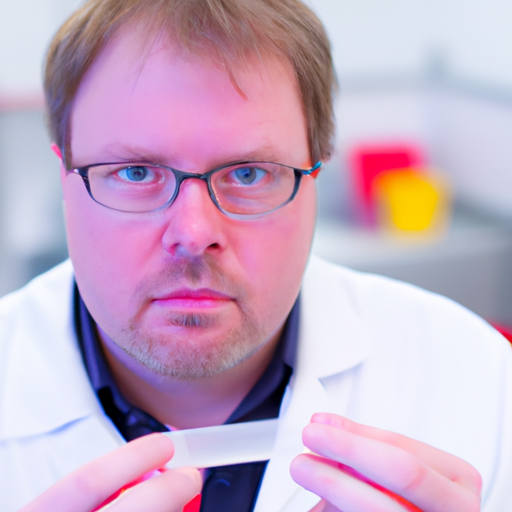- Your cart is empty
- Continue Shopping
Revolutionizing Medicine: Exploring the Development, Diagnosis, Treatment, and Causes of New Drugs

In the world of modern medicine, the development of new drugs has revolutionized the way we diagnose, treat, and understand various diseases and conditions. From life-saving breakthroughs to innovative treatments, these advancements have improved the quality of life for countless individuals around the globe. However, the journey from inception to patient use is a complex and intricate process. In this article, we will delve into the fascinating world of drug development, exploring the various stages, challenges, and successes that come with it. Join us as we break ground on the development of new drugs in modern medicine, provide a comprehensive guide to diagnosis, treatment, and symptoms, and unravel the puzzle of investigating the causes and challenges faced in this critical field.
1. "Breaking Ground: The Development of New Drugs in Modern Medicine"
The development of new drugs in modern medicine has revolutionized the way we diagnose and treat various diseases and conditions. With advancements in technology and a deeper understanding of the human body, researchers and scientists are continuously breaking ground in this field to improve patient outcomes and save lives.
One of the first crucial steps in drug development is the identification of a target disease or condition. This involves extensive research and analysis of the symptoms, causes, and underlying mechanisms of the ailment. By understanding the fundamental aspects of the disease, scientists can then design drugs that specifically target these mechanisms, providing effective treatment and potential cures.
Once a target is identified, the drug discovery process begins. This involves the screening of thousands, if not millions, of potential drug compounds to find those that exhibit the desired therapeutic effect. Over the years, advancements in high-throughput screening techniques have expedited this process, allowing researchers to test numerous compounds simultaneously. This approach significantly increases the chances of finding a promising drug candidate.
After the initial screening, the selected compounds undergo rigorous preclinical testing. This phase involves in vitro and in vivo experiments to evaluate the drug’s safety, efficacy, and potential side effects. Animal models are often employed to mimic human diseases and observe the drug’s effects on living organisms. Preclinical trials provide crucial data to determine whether the drug is safe for human trials and if it shows promising results in treating the target disease.
If a drug successfully passes preclinical testing, it moves into clinical trials, which are conducted in three phases. Phase I trials involve a small group of healthy volunteers or patients to assess the drug’s safety, dosage, and potential side effects. Phase II trials are expanded to a larger group of patients to evaluate the drug’s effectiveness and further assess its safety. Finally, Phase III trials involve a much larger population to confirm the drug’s efficacy, monitor side effects, and compare it to existing treatments.
Throughout the clinical trial phases, the drug’s safety and efficacy are closely monitored by regulatory authorities, such as the Food and Drug Administration (FDA) in the United States.
2. "From Lab to Patient: A Comprehensive Guide to Diagnosis, Treatment, and Symptoms"
The journey of a new drug from the laboratory to the patient is a complex and meticulously regulated process. It involves several stages of development, extensive testing, and rigorous evaluation before it can be prescribed as a diagnosis, treatment, or symptom management option.
The first step in this process is the discovery and identification of a potential drug candidate. Scientists and researchers explore various avenues, such as studying disease mechanisms, screening compounds, or analyzing genetic data, to pinpoint molecules that have the potential to interact with specific targets in the body. Once a promising compound is identified, it undergoes extensive laboratory testing to assess its safety, efficacy, and potential side effects.
Following successful laboratory testing, the drug candidate moves into preclinical studies. These studies involve testing the drug in animals to evaluate its safety profile and determine appropriate dosage levels. Preclinical data is crucial in assessing the drug’s potential risks and benefits, allowing researchers to make informed decisions about whether to proceed to the next stage.
If the preclinical studies yield positive results, the drug candidate progresses to clinical trials. Clinical trials involve testing the drug in human volunteers under controlled conditions. These trials are conducted in multiple phases, each with specific objectives. Phase I trials primarily focus on determining the drug’s safety, dosage range, and potential side effects in a small group of healthy volunteers. Phase II trials involve a larger group of patients and aim to evaluate the drug’s effectiveness and optimal dosage. Lastly, Phase III trials involve a much larger number of patients and provide further evidence of the drug’s safety and efficacy compared to existing treatments or placebos.
Throughout the clinical trial process, rigorous monitoring and data collection are conducted to ensure patient safety and generate reliable results. Regulatory authorities, such as the Food and Drug Administration (FDA) in the United States, carefully review the accumulated data to assess the drug’s benefits, risks, and overall quality. If the drug successfully completes all phases of clinical trials and meets the necessary requirements, it may be approved for market authorization.
Once a drug is approved, it becomes available for diagnosis, treatment, and symptom management
3. "Unraveling the Puzzle: Investigating the Causes and Challenges Faced in Drug Development"
Unraveling the Puzzle: Investigating the Causes and Challenges Faced in Drug Development
The development of new drugs is a complex and intricate process that involves extensive research, rigorous testing, and regulatory approvals. It is a painstaking task that requires a deep understanding of the underlying causes of diseases, identification of potential drug targets, and overcoming numerous challenges along the way. In this section, we will explore some of the causes and challenges faced in drug development, shedding light on the intricate puzzle that scientists and researchers strive to solve.
1. Identifying Disease Mechanisms:
One of the primary challenges in drug development is understanding the underlying causes and mechanisms of diseases. Without a clear understanding of how a disease operates at a molecular level, it is difficult to design drugs that can effectively target and treat the condition. This requires extensive research and collaboration between scientists, clinicians, and pharmaceutical companies to unravel the intricate web of disease mechanisms.
2. Drug Target Identification:
Once the disease mechanisms are understood, the next challenge is identifying suitable drug targets. Drug targets are specific molecules or proteins involved in the disease process that can be targeted by drugs to modulate the condition. However, identifying these targets and ensuring their specificity and safety is a daunting task. It requires careful analysis of the disease pathways and extensive screening of potential drug candidates to find molecules that can selectively bind to the target and produce the desired therapeutic effect.
3. Safety and Efficacy Assessment:
Another crucial aspect of drug development is ensuring the safety and efficacy of potential drug candidates. Drug candidates undergo rigorous preclinical testing to assess their toxicology and pharmacokinetic profiles. This involves evaluating the drug’s behavior in animals to determine its potential side effects, dosage requirements, and overall safety. Additionally, extensive clinical trials are conducted to assess the drug’s efficacy in human subjects, further scrutinizing its safety and effectiveness.
4. Regulatory Hurdles:
Navigating the regulatory landscape is a significant challenge in drug development. Pharmaceuticals must meet stringent regulatory requirements imposed by government agencies such as the Food and Drug Administration (FDA) in the United

